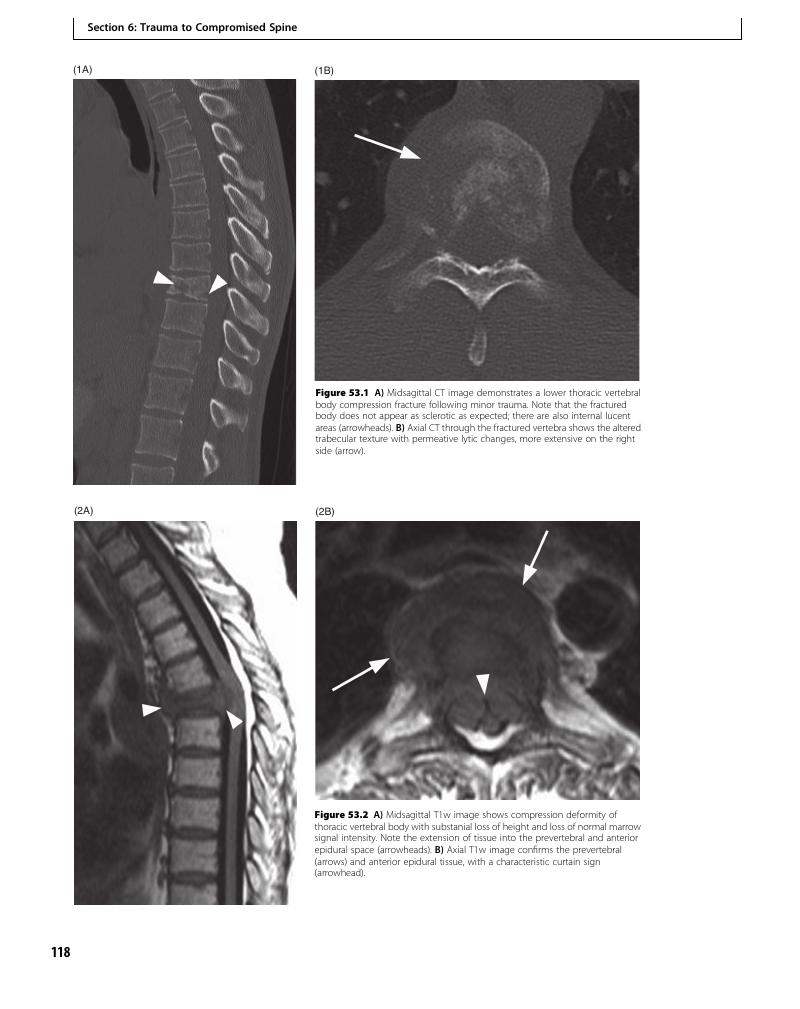Book contents
- Clinical Imaging of Spinal Trauma
- Clinical Imaging of Spinal Trauma
- Copyright page
- Contents
- Contributors
- Acknowledgments
- Section 1 Normal Variants and Mimickers
- Section 2 Recommendations, Pitfalls, and Controversies
- Section 3 Trauma to Uncompromised Spine
- Section 4 Thoracolumbar Trauma Classification
- Section 5 Specifics of Pediatric Spinal Trauma
- Section 6 Trauma to Compromised Spine
- Case 53 Malignant Compression Fractures
- Case 54 Benign Compression Fractures
- Case 55 Sacral Stress (Insufficiency) Fractures
- Case 56 Fractures of the Ankylosed Spine
- Index
- References
Case 53 - Malignant Compression Fractures
from Section 6 - Trauma to Compromised Spine
Published online by Cambridge University Press: 28 March 2018
- Clinical Imaging of Spinal Trauma
- Clinical Imaging of Spinal Trauma
- Copyright page
- Contents
- Contributors
- Acknowledgments
- Section 1 Normal Variants and Mimickers
- Section 2 Recommendations, Pitfalls, and Controversies
- Section 3 Trauma to Uncompromised Spine
- Section 4 Thoracolumbar Trauma Classification
- Section 5 Specifics of Pediatric Spinal Trauma
- Section 6 Trauma to Compromised Spine
- Case 53 Malignant Compression Fractures
- Case 54 Benign Compression Fractures
- Case 55 Sacral Stress (Insufficiency) Fractures
- Case 56 Fractures of the Ankylosed Spine
- Index
- References
Summary

- Type
- Chapter
- Information
- Clinical Imaging of Spinal TraumaA Case-Based Approach, pp. 118 - 121Publisher: Cambridge University PressPrint publication year: 2018



